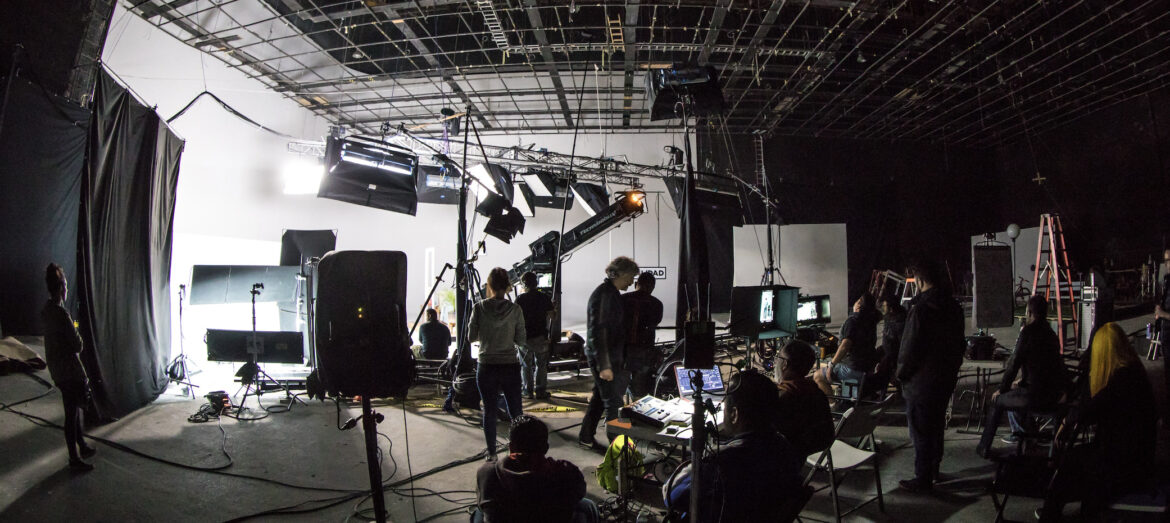– James Monaco, How to Read a Film1
Raindrops: something small with a great impact:
 The raindrop falls into the lake and forms small waves around it. This image is repeated a few times in Oppenheimer, Christopher Nolan’s most recent film, provoking different interpretations in those who watch the film. On the one hand, we can compare the drops with the atomic bombs that the film deals with: their explosion causes great destruction around them. However, we can also interpret this image as something small that generates a chain of events with great consequences. Even if the interpretations are not so far from each other, they have important differences.
The raindrop falls into the lake and forms small waves around it. This image is repeated a few times in Oppenheimer, Christopher Nolan’s most recent film, provoking different interpretations in those who watch the film. On the one hand, we can compare the drops with the atomic bombs that the film deals with: their explosion causes great destruction around them. However, we can also interpret this image as something small that generates a chain of events with great consequences. Even if the interpretations are not so far from each other, they have important differences.
How are bombs made? How are movies made?
Film is art, industry, pulpit, and laboratory at the same time. Films make us laugh, move us, they make us face ever-increasing technological advances, they make us look at a pulpit that holds our attention for more or less two hours—in Oppenheimer‘s case, three hours—while teaching us about things we have never thought or imagined before. This art form called cinema has become an important part of people’s daily lives.
In Oppenheimer, we see how an atomic bomb is made. We don’t need to go into great detail—the film itself doesn’t—but we can see that it’s a process involving hundreds of people. A scenario—Los Alamos—is set up in the middle of the desert, with scientists, theorists from different areas, secretaries, cooks, photographers and soldiers. A millionaire’s budget and hundreds of people involved in testing and building the atomic bombs dropped on Hiroshima and Nagasaki.
 Films, to some extent, are produced similarly. There are thousands of people and astronomical amounts of resources for the production of a film. From screenwriters, costume designers, actors, producers, builders, camera operators, anyway. Thousands of people are involved.
Films, to some extent, are produced similarly. There are thousands of people and astronomical amounts of resources for the production of a film. From screenwriters, costume designers, actors, producers, builders, camera operators, anyway. Thousands of people are involved.
James Monaco states that film may not be the most abstract of art, but it is undoubtedly the most complete of artistic forms.2 This is because the film uses all artistic forms so that it can come into existence. Far beyond being an important technical invention, film uses plastic arts to assemble each of the scenes, from the set to the final montage. In addition, it uses the dramatic art and all the quality of writing and music to create powerful and touching works.3 This brings us to our next point: film as a pulpit.
Film as a pulpit:
When reflecting on cinema and Christopher Nolan’s film, we reflect about impact. Something small that has big consequences. The sum of different artistic forms and their potential for communication generate a final product, a film with a message embedded in a worldview.
According to Albert Wolters, a worldview will serve as a guide for life, even when present unconsciously, working subjectively in a person’s life.4 It works as a guide for the world in general, giving a sense of right and wrong as we go through confrontations and moments of decision. It affects how we relate to the world and access the life events, issues and structures of our time and society.
 Brian Godawa, screenwriter and author of works that deal with the relationship between cinema and philosophy and the Christian faith, says that “all religion and philosophy in the end comes down to a vision of the world, as an understandable network of beliefs through which we interpret our experiences.”5 The same author also states that cinema, as an art and entertainment industry, reinforces certain values to the detriment of others. Thus, the authors and producers of films imprint their own worldview on film, intentionally or unintentionally. It is easy to imagine that, when producing a movie, the author had to make decisions about script, costumes, scenery, soundtrack and others. These decisions are the result of the action of the author’s worldview.
Brian Godawa, screenwriter and author of works that deal with the relationship between cinema and philosophy and the Christian faith, says that “all religion and philosophy in the end comes down to a vision of the world, as an understandable network of beliefs through which we interpret our experiences.”5 The same author also states that cinema, as an art and entertainment industry, reinforces certain values to the detriment of others. Thus, the authors and producers of films imprint their own worldview on film, intentionally or unintentionally. It is easy to imagine that, when producing a movie, the author had to make decisions about script, costumes, scenery, soundtrack and others. These decisions are the result of the action of the author’s worldview.
Film thus functions as a medium through which an author’s worldview manifests. In this sense, we remember the audacious idea that the means, the media, are our extensions. This idea was originally coined by H. M. McLuhan in his book, Understanding Media: The Extensions of Man, in 1964. For the author, any utensil, from the simplest to the most complex, is an extension of our body. Thus, McLuhan does not understand media only as the means of communication, but as the whole range of technological tools conceived by human beings, including the means of communication.
Just as the radio extends the ears of the listener, it also extends the speaker’s voice. Even more than that, it extends the ideas and even the mood of those in control of the devices. Technology as an extension of our bodies and ideas is very present in the films. Thus, film, as a medium, connects two points: the authors and the spectators. Authors, like everyone else, have worldviews. Whether religion or philosophy of life, the author’s worldview is imprinted on the film. Film, in this way, is the medium, the pulpit, where a worldview is presented. We know that in addition to all this, there are still commercial and ideological interests behind any cultural industry product. But let us not fool ourselves. As much as an author goes to great lengths to make the film more neutral and independent, worldviews reveal themselves in every choice they make.
If each medium is an extension of what its users feel and think, cinema has been a pulpit—or an altar of predictions, fears and hopes, values and criticisms—of the modern gods for its people. Thus, we cannot ignore the communication potential of films. All potential, due to the sum of artistic expressions, serves as a pulpit of worldviews with a high capacity for persuasion. Imagine a twenty- or thirty-minute sermon in a church. A pastor communicates with words and sometimes some visual aid. Movies, on the other hand, communicate with drama, poetry, music, dancing, top-notch acting for about two hours. Some films from the 1950s and 1960s reached four and a half hours in length. In this ritual, the film is the sermon that exposes a worldview on a theme, the cinema is the pulpit and the producers are the preachers.
The perks of not going to the movies and what we are missing out:
As soon as the COVID-19 pandemic began to become better known, several protective measures were taken. Among these, social isolation measures were the ones that most influenced people’s daily lives. Movie theaters, like several other spaces, had to close their doors or limit the number of people allowed in their rooms. In an effort to find the positive side of the situation, we saw people pointing out how much better it is to stay at home for certain activities. With the advent of streaming platforms, for example, we no longer need to leave the house to watch a movie. In fact, we no longer need to stand in queues or look for a parking space. We no longer need to be irritated by someone who turns on their cell phone in the middle of a movie or people who like to comment on the story in the middle of the presentation. We can watch a movie in the comfort of our homes, in pajamas, accompanied or not.
A question that remains, however, is: what do we lose, or what do we fail to gain when we don’t go to the movie theater?
 In addition to the sensory experience on account of a large screen and surround sound—which allow us to see more and hear more and have more contact with details and artistic multiplicity—going to the cinema allows us something more: to be with people. There is something relational about God’s creation. A triune God who creates us for relationship. To be human is to be a relational being. Sometimes it might be challenging to be with other people and deal with the points that bother us, but it’s part of who we are.
In addition to the sensory experience on account of a large screen and surround sound—which allow us to see more and hear more and have more contact with details and artistic multiplicity—going to the cinema allows us something more: to be with people. There is something relational about God’s creation. A triune God who creates us for relationship. To be human is to be a relational being. Sometimes it might be challenging to be with other people and deal with the points that bother us, but it’s part of who we are.
While James Monaco describes the art’s function as “describing the Universe and our place in it,” we understand that films deal with life’s big questions. Going to the cinema, facing these big questions presented by the film and, finally, meeting people, turns out to be a complete experience.
There is, yet, another choice in Nolan’s film: the notion of near and far. The film transitions between close-ups of Oppenheimer’s face and images of distant galaxies and the death and birth of stars. There is a Universe in each of us. Certainly, sometimes it’s better to be home. The comfort of home is, for many, irreplaceable. However, if we want to deal with the great questions of life presented by films like Oppenheimer, we will find more answers in relation to the other, with the universe of the other.
Oppenheimer and Barbie were the big film releases of 2023. Both films took millions of people to the movietheaters all around the world. We’ve seen multiple brands and digital influencers use these two films as themes to capture people’s imagination and sell more products. Dozens of interviews, reviews, analyses, and articles were and will be written about these two pieces. Perhaps these two films are like drops or bombs: something compact with big impact and consequences. The hope is that these consequences will be positive, bringing people closer together so, in cooperation, we can consider the big questions of life in relationship with each other.





